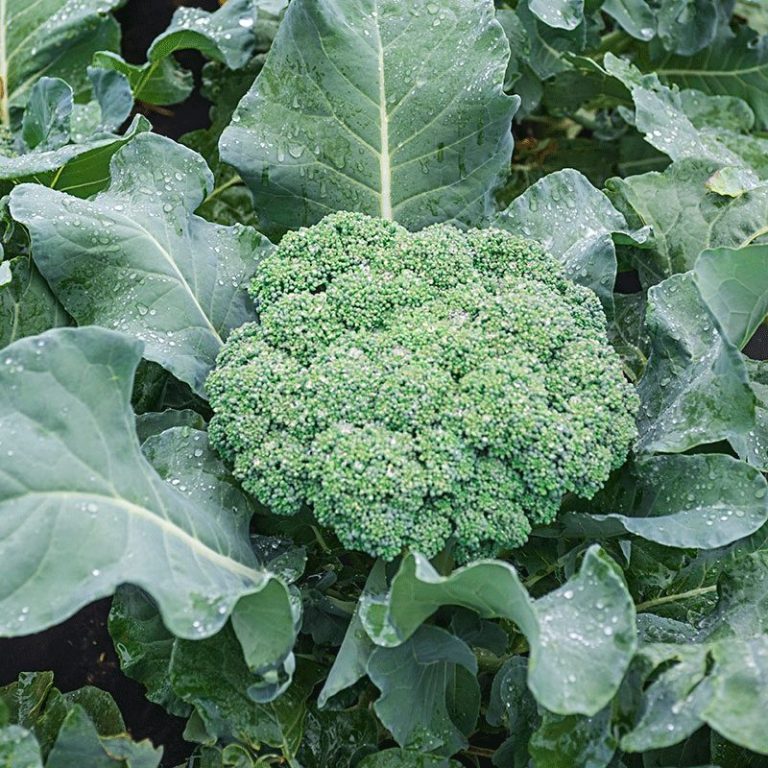Description. Broccoli belongs to the cabbage family and is one of the most nutritious vegetables. It is very high in vitamins A, B, and C and also provides both calcium and iron. One cooked cup of fresh broccoli is less than fifty calories yet can provide half the minimum daily requirement of A and double the daily requirement for C for an adult. Broccoli is also an excellent source for folic acid, and it is rich in fiber.
Broccoli is not the easiest plant to grow, and it does take space. Broccoli requires the right cool temperatures for proper growth and is very susceptible to insect attacks. Not grown properly, it can be bitter with stunted heads. If you live in an area with no spring and lots of hot weather early in the year, you will do best growing broccoli in the fall. In some areas, you may be able to double crop with both spring and fall crops.
Types. Broccoli is available in a number of varieties, mostly depending on the length to maturity. Two types are available, heading which produces heads like cauliflower and sprouting. Sprouting varieties can produce a continuous crop of sprouts over a longer season, but with smaller heads.
Culture
- Propagation: direct seeded or transplanted
- Amount needed for 100-ft. row: ½ oz.
- Where to plant: direct sun
- When to plant: early spring, even before last frost if you can cover the plants
- Row spacing: 30 in.
- Plant spacing: 24 in.
- Depth: ½ in.
- How much per person: fresh, 3 to 5 plants; processed, 5 to 10 plants
- Days from planting to eating stage: 55 to 70, depending on variety
Requirements
Soil type: A rich loamy soil produces best, but broccoli will grow in less than perfect soils.
pH: Broccoli does not like acidic soils, 6.5 to 7.
Fertilizer: Broccoli is not a heavy feeder. Well-dried cow manure worked into the bed will add to productivity as will occasional fertilizing with a commercial water-soluble fertilizer. Too much nitrogen, however, produces lots of foliage instead of heads.
Growing tips
Broccoli can be direct seeded in the garden or bed, and it is the method often used for producing a fall crop. Broccoli is most often grown from transplants, either plants purchased to set out in March or early April or by starting your own plants indoors. Plant the seeds in a flat in early January, sowing about a half-inch deep. Broccoli plants are easy to grow. I sow tiny rows of seeds in a flat under a light and transplant into plastic trays, paper pots, or foam coffee cups once the plants have two leaves. Keep plants well watered throughout the growing season.
Pests
Treat pests as soon as you spot them. Everything that crawls and flies loves broccoli, but the most common pest and one that causes the most problems is the cabbage worm. Burying inside the head, they’re insidiously hard to spot.
Harvest
It’s important to harvest broccoli before the buds flower and begin to dry out. Cut off heads so a long stem remains on the plant. With some varieties, numerous side shoots will form. Soak harvested heads in saltwater before eating or preserving if heavily infested with worms.
Storage
Broccoli is best fresh but can also be blanched and frozen for storage.


